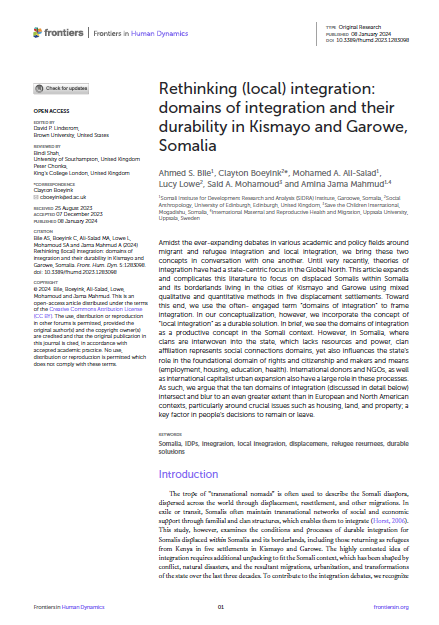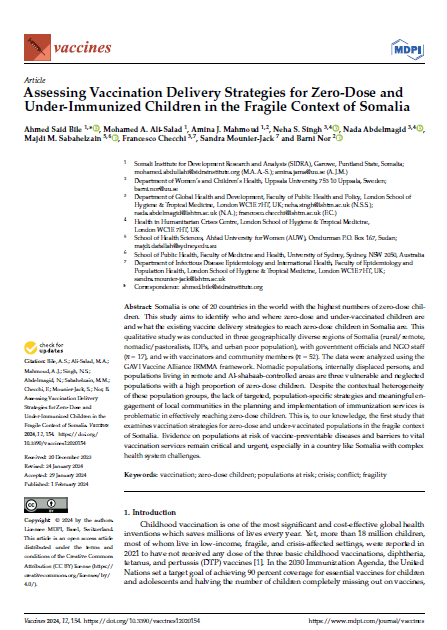This Paper was originally published on www.sciencedirect.com
A growing literature documents the significant barriers to accessing care that Internally Displaced Persons (IDPs) face. This study focuses on gender-based violence (SGBV), an issue often exacerbated in times of forced displacement, and adds to extant debates by considering the wide range of social connections (pathways and actors) involved in providing care beyond the formal biomedical (and justice) system. This research asks, who do IDPs turn to following SGBV and why? How effective do IDPs perceive these social connections to be? To answer these research questions, the study used ‘participatory social mapping’ methodology for 31 workshops held with over 200 participants in Somalia and the Democratic Republic of the Congo in 2021/2022. Pathways to SGBV-related care for IDPs appear eclectic and contingent upon not only the availability and accessibility of support resources but also social, cultural and gendered beliefs and practices. ‘Physical’, mental health, and justice needs are intertwined. They are hard to decouple as many actors cut across need categories, including family, faith and aid organisations, and customary institutions. Comparing Congolese and Somali sites of displaced communities, we see significant similarities and overlaps in pathways to care. While both countries have experienced severe erosions of state capacity, NGOs and parallel faith-based and customary legal, psychological, and health systems have filled the state’s weakness to varying degrees of acceptance by IDP participants. A comprehensive understanding of the local milieu, which requires illuminating the logics behind where people actually turn to for care, is crucial for interventions supporting SGBV victims/survivors; indeed, they risk being inefficient if they only address barriers to formal systems.


